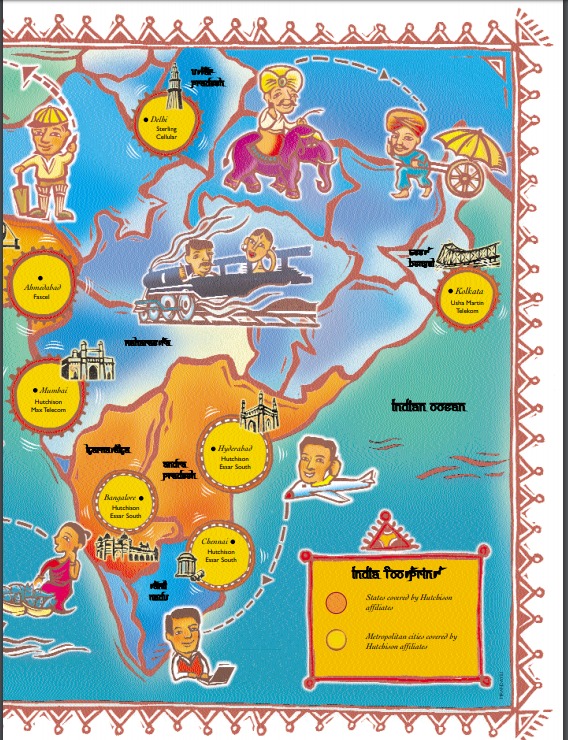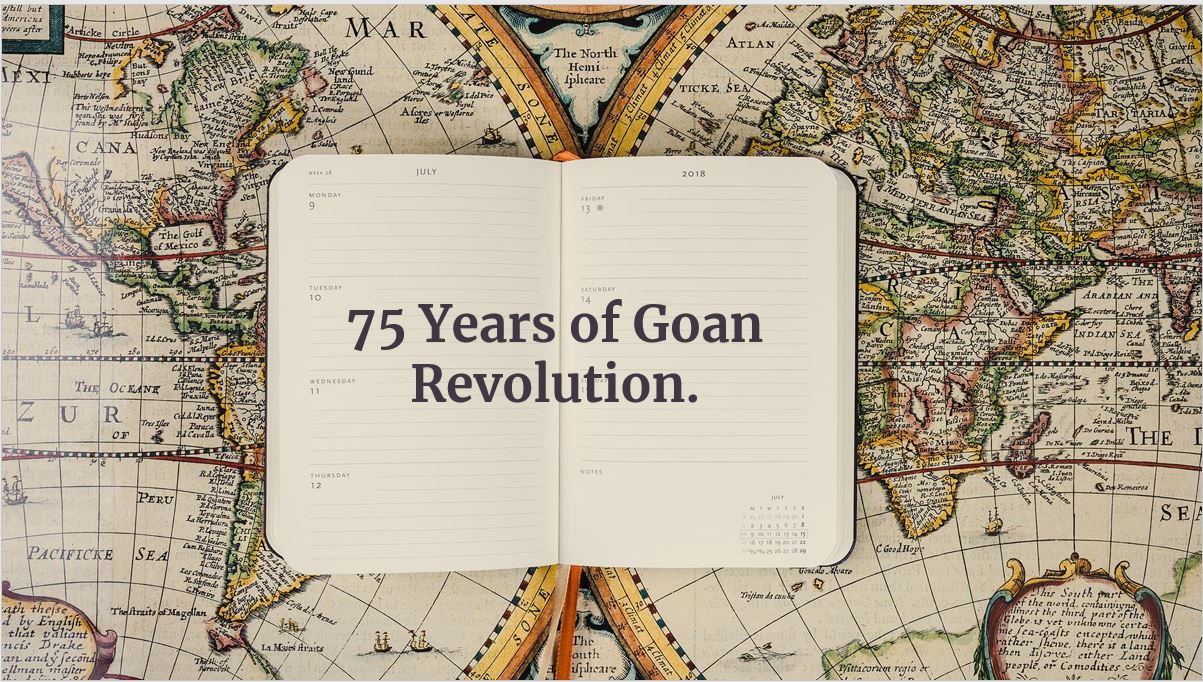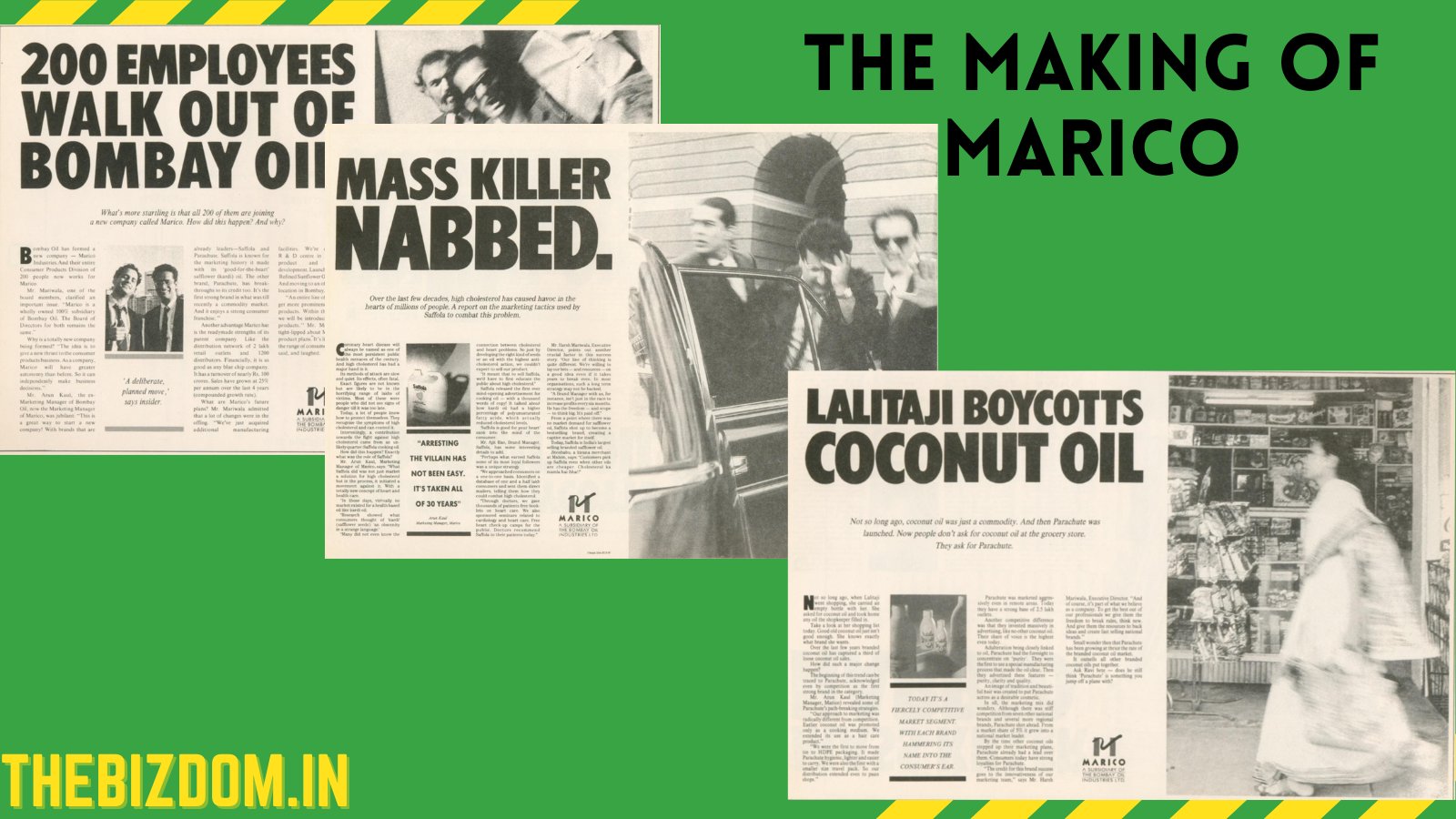6 min to read
Days of Missed call
The days of Rs. 16 mins: How it got started?
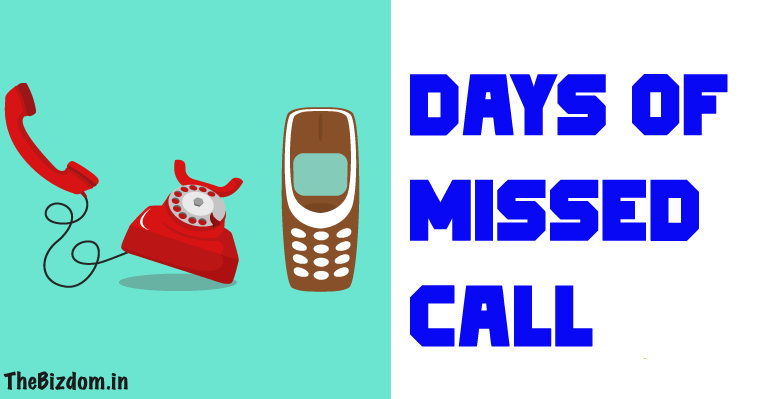
Start
Pandit Sukh Ram was our Minister of Communications and Information Technology and he will be destined to be the man who changed our telecom world, much before he landed up in jail. N. Vittal, an IAS, whose last posting was as Central Vigilance Commissioner, prepared the New Telecom Policy produced in 1994 (NTP 94) that marked the advent of liberalization in telecommunications in India.
Our telephone density was dismal having about 0.8 per hundred persons as against then world average of 10 per hundred persons, in comparison China had (1.7), and Pakistan (2).
The resources needed to meet the target levels of telecom density, which was estimated at Rs. 23,000 crores caused this step.
The key target was
- Telephones should be available on demand by 1997
- All villages should be covered by 1997
- In the urban areas a PCO should be provided for every 500 persons by 1997
However, soon they realised Value-Added Services like Cellular Mobile. And, for that the entire country was divided into roughly 20 circles, categorised as A, B or C depending upon their revenue potential. For all these licences, bidding was to be done into a two-stage process: (a) a pre-qualification based on the evaluation of financial worth , (b) experience in service provision and the second being an evaluation of bids. Prior to the bidding, there was no ceiling on the number of circles that could be awarded to a single entity. Not much action happened except for the four metros, there were no takers for the other circles. Re-bidding was called for some of these licences and they picked finally more licenses for Andhra Pradesh, Gujarat, Madhya Pradesh, Punjab, Rajasthan and Maharashtra.
Key Players
Market was a mix of many players.
Bharti
Sunil Mittal. Son of a politician, from Ludhiana. He started his first business in 1976 at the age of 18, to make crankshafts for local bicycle manufacturers and made decent money when he became the exclusive dealer for Suzuki generators.
JV Modi
Bhupendra Kumar Modi was the son of legendary Gujarmal Modi and was famous as “JV Modi”. As he was known for introducing innovative new technologies via Joint Ventures with Continental’s radial tyres, Xerox copiers, and Alcatel’s electronic switching. He will later start Spice brand with three more licences. All of which were sold to Airtel subsequently. His son Dlilp, makes and sells mobile phones under the Spice brand.
Usha Martin
Founded in 1961 by two brothers, Mr Basant K (or BK) Jhawar and Mr Brij K Jhawar. The Scottish company Martin-Black partnered the Jhawars by providing resources such as technology and capital and hence the name—Usha Martin 15th August 1961 in Ranchi. In 2019 they have sold their core business to Tata’s. But before they also got into the telecom word when in 1995 it partnered with Telekom Malaysia and other international investors to form Usha Martin Telekom Ltd.
NahataJI
 And, above all these was Mr. Mahendra Nahata (about whom I can talk a length but sorry my in-laws: the other Nahatas will not allow me).
Just a few facts: His Himachal Futuristic Communication (HFCL) was started as Maroo-Nahata venture and will won nine circles. But the telecom ministry, unwilling to create a monopoly, changed the bidding rules and handed only three circles. Few years later his company will be part of K10, as well as have Kerry Packer as it’s investor.
Decade later, Infotel Broadband Services Private Limited (IBSPL) will be promoted by Anant Nahata—his son– and will shot into national prominence twice by June 2010. First by winning all 22 circles in the 4G auction and then because of an Rs.4800 Crore/$1 Billion acquisition by JIO.
And, above all these was Mr. Mahendra Nahata (about whom I can talk a length but sorry my in-laws: the other Nahatas will not allow me).
Just a few facts: His Himachal Futuristic Communication (HFCL) was started as Maroo-Nahata venture and will won nine circles. But the telecom ministry, unwilling to create a monopoly, changed the bidding rules and handed only three circles. Few years later his company will be part of K10, as well as have Kerry Packer as it’s investor.
Decade later, Infotel Broadband Services Private Limited (IBSPL) will be promoted by Anant Nahata—his son– and will shot into national prominence twice by June 2010. First by winning all 22 circles in the 4G auction and then because of an Rs.4800 Crore/$1 Billion acquisition by JIO.
The FIght for the First Call
The Bombay (it will take another year to be officially called Mumbai) licence was issued in November 1994 and Hutchison Max Telecom was moving quickly to build a network, and was looking like to be the pioneer in India. Just when a Communist led state decides to challenge them.
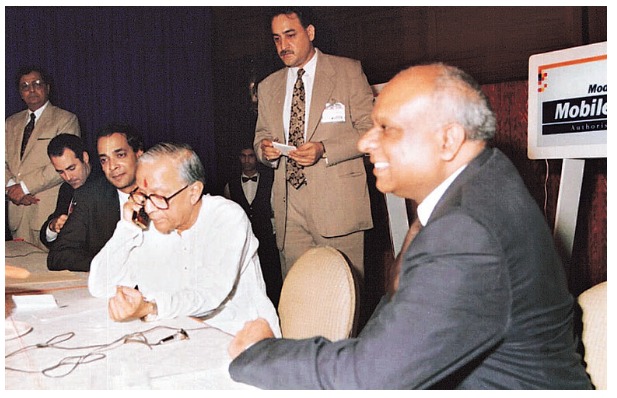 Sometime in mid-1994, Joyti Basu invited B K Modi to his Writers’ Building office. He wished to have declared that Kolkata should be the first Indian city to have a mobile telephony network. B K Modi got excited and even committed an exact date: July 31, 1995
And, as promised On July 31, 1995, the first call was made on the Modi Telstra MobileNet network: Mr. Basu calling Mr. Ram
Sometime in mid-1994, Joyti Basu invited B K Modi to his Writers’ Building office. He wished to have declared that Kolkata should be the first Indian city to have a mobile telephony network. B K Modi got excited and even committed an exact date: July 31, 1995
And, as promised On July 31, 1995, the first call was made on the Modi Telstra MobileNet network: Mr. Basu calling Mr. Ram
Within few days, Cricketer Sunil Gavaskar (he was the Mumbai’s Sheriff at that time) made another call to Analjit Singh, Chairman of Hutchison Max, to launch the mobile in Mumbai.
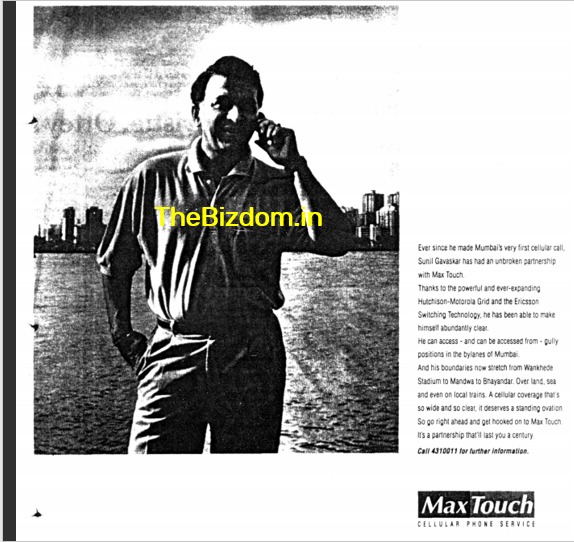 Hutchison Max Telecom will later launch the Max Touch brand following an advertising campaign in which Sunil endorsed the “Hello Bombay” tagline.
Hutchison Max Telecom will later launch the Max Touch brand following an advertising campaign in which Sunil endorsed the “Hello Bombay” tagline.
In Delhi, by December 1994, Delhiites woke up, with hoardings. “From Ludhiana to Louisiana”, from “Amritsar to Oslo”, suggesting the arrival of cellphones in the city. By Mid 1995, even before the launch, the company in question, Bharti, had 8,000 customers on a waitlist (kinda of those day’s invite only business).
First Response
In their NTP94, it was estimated that the market for mobile phones in Delhi would be around 30,000 subscribers. However, it went much better than that. The initial peak tariffs were fixed at more than Rs16 per minute for both incoming and outgoing calls. A have heard many stories of how everyone was just giving the missed calls OR prank people to call on some Masti-wali-baate phone numbers. And, it would take some time to expand the subscriber base. This is what was how it was in the first year of the launch.
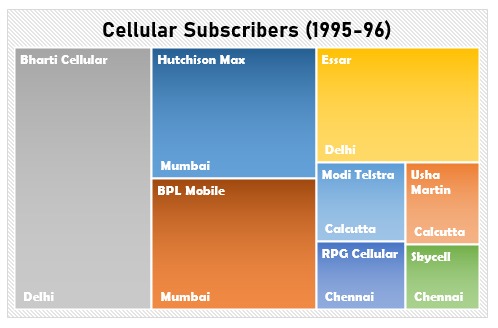
What followed?
In 1995 the Telecom Regulatory Authority of India (TRAI) was instituted as an independent regulator. By 2000, TRAI was split into two agencies, a “new” TRAI, divested of all its adjudicatory and dispute-settling powers, and a newly created agency named Telecommunications Dispute Settlement and Appellate Tribunal (TDSAT).
By March 1996, the total number of subscribers in the four metros was 63,642. Delhi had the largest number of subscribers during this period and Bharti had the lead in this market. The other competitor Essar in the Delhi circle was lagging behind in the subscriber registration.
But there will be a lot of changes in the telecom players, many excited, and many entered. Here is a quick look at some of those movements.
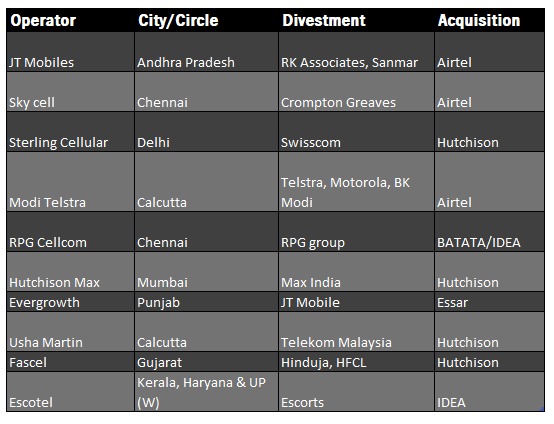
After a few years, this is how today’s Vodafone-Idea in their earlier avatar were showing their all India presence.
